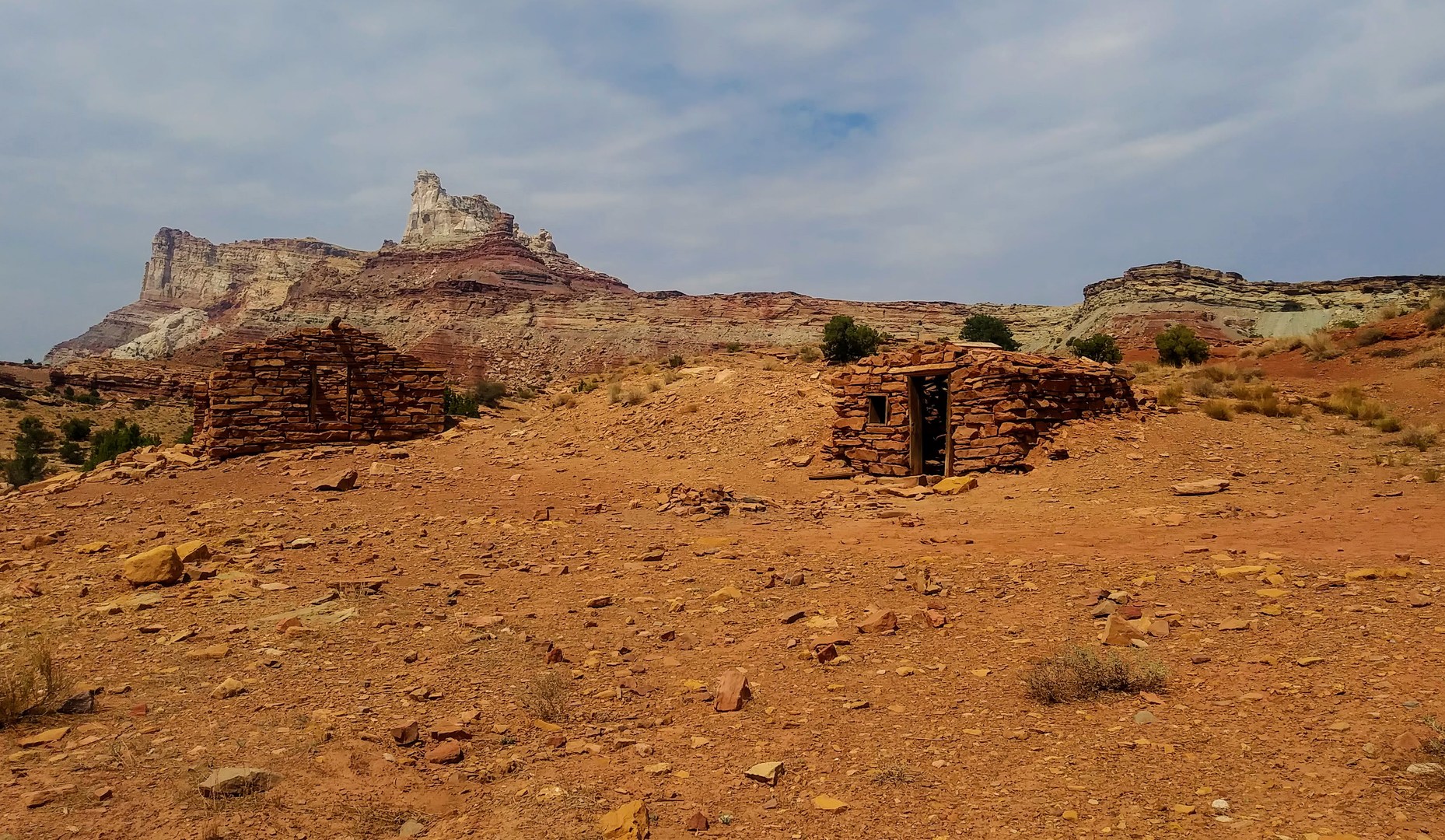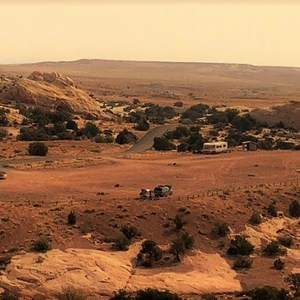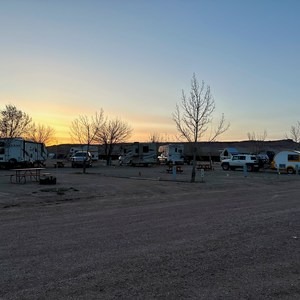You are here
Temple Mountain is located on the west side of the San Rafael Swell near the intersection of W. Temple Jct. and Behind the Reef Rd. The area surrounding Temple Mountain is like a time capsule; remnants of prospector camps, mining equipment, and abandon mine tunnels sit forgotten yet preserved in the high desert.
Hiking here allows the flexibility to explore as you choose with numerous spur trails, roads, and canyons. I began at the small abandon prospector camp which can be found just behind Temple Mountain Campground on the other side of the wash. Next, follow the 4x4 road east of the prospect camp for roughly 0.5 miles to the base of Temple Mountain. From here, you can hike up to the cliffs to explore the abandon mines, follow the road west around the base of Temple mountain, or find your own way along spur trails or through canyons. ATVs are permitted on the road, but I would recommend going on foot to better explore the area.
After exploring up on the cliffs, I continued west on the road following the base of the mountain for about 1.5 miles before turning around. On the way back, I decided to descend through one of the canyons until reaching Temple Wash Trail. From here, you can continue east and the trail will take you back to the prospector camp area. Note: this route takes moderate canyoneering skills and some wayfinding to attempt.
Logistics:
Parking is available at the Temple Mountain Campground. There is little shade on the trail and potable water is not available at the campground. Bring plenty of water and sun protection (glasses, hat, sunscreen, etc.) Study hiking shoes with ankle support it recommended.
History
Geologic units within the cliffs of Temple Mountain and the soils of the Temple Wash are rich in a dull yellow uranium-bearing mineral called carnotite—K2(UO2)2(VO4)2. Various native tribes in region once used the mineral to produce decorative paints and to create petroglyphs. However, it is a historical irony that the Ute’s would also use this mineral as the basis of their war paint.
As with its duality in native cultures, in modern times we have discovered way to harness the power of uranium for peaceful purposes—the production of zero carbon electricity—or to power weapons of unspeakable destruction. The history of Temple Mountain is a story of the latter case.
In 1947, as the United States was entering the Cold War, the US desired a domestic supply and a strategic stockpile of uranium to build nuclear weapons and later to power the navy’s new fleet of submarines. Therefore, the Atomic Energy Commission (AEC) set a minimum price for uranium ore and guaranteed rates for the next 10 years. At the time, commercial nuclear energy did not exist, so the US government was the only legal buyer. Following the discovery of the largest known uranium deposit in 1952 near Moab, UT, a boom of prospectors seeking fortune descended upon the canyon country of southern Utah. Reminiscent of the “wild west”, these mining operations were subject to little to no regulation or occupational safety. [1] [2]
Aside: Uranium? Yikes! Are you worried about growing a third arm or glowing in the dark after visiting Temple Mtn? Don’t be! The natural world contains many sources of naturally occurring radioactivity from the soil, rocks, water, and from space. One of my favorite things about being a geologist and engineer myself is learning about the idiosyncrasies found in natural world and how life has evolved with them over billions of years!
These natural sources of radioactivity, such as the geologic formations at Temple Mtn, represent an extremely low dose that is within the range of background exposure that our bodies regularly receives—from soils, to seawater, granite counter tops, ceramics, and even in the food we eat!
In fact, it is believed that the primary occupational hazard the miners themselves faced was from breathing particulate dust and other noxious gasses, common to any underground excavation, in an inadequately ventilated environment. [2]
Today, because the mining tunnels may accumulate radon and other noxious gasses, they have been sealed to prevent public entry.
But the similar to the 1848 gold rush, the uranium boom would end almost as suddenly as it had begun, with most prospectors turning little to no profit. By the early 1960s, the AEC’s stockpiles were more than sufficient and federal purchases were put on hold. In addition, the private sector was now free to purchase uranium oxide for use in commercial energy plants, making the price of the ore competitive. [1]
To learn more about the uranium boom, check out Roadside History of Utah, available at your local library. Or, check out this episode from one of my favorite podcasts Decouple. [3] [2]
References:
[1] Ringholz, R. (2016, April 26). Utah's uranium boom. History to Go. Retrieved November 9, 2021, from https://historytogo.utah.gov/utahs-uranium-boom/
[2] Keefer, C. (2021, May 30). Listen. Decouple Podcast. Retrieved November 9, 2021, from https://www.decouplepodcast.org/podcast/episode/2c1d50f1/uranium-mining-past-present-and-future-feat-jerry-grandey.
[3] Bennett, Cynthia L. Roadside History of Utah. 1999. Print.
Logistics + Planning
Current Weather: Powered by Dark Sky





























Comments
Sign In and share them.